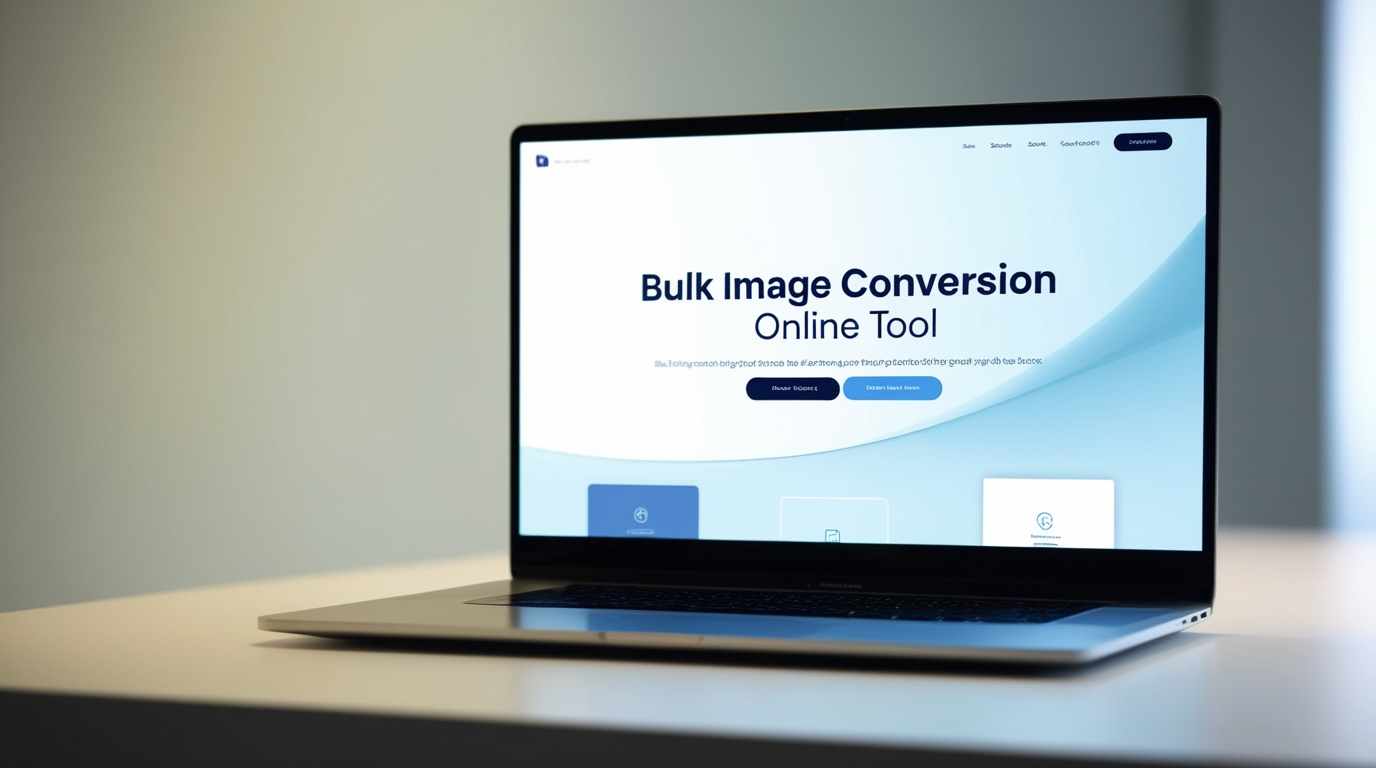Ultimate Guide to Bulk Image Conversion: Easy, Fast, and Efficient

In today’s digital world, working with images is part of daily life. Whether you run a website, manage social media, or simply want to organize your photo library, bulk image conversion can save you time and hassle. In this guide, we’ll walk you through everything you need to know about bulk image conversion, popular tools you can use, and why choosing the right image format matters.
Let’s dive in!
What is Bulk Image Conversion?
Bulk image conversion simply means converting multiple images from one format to another at once, instead of doing it one by one.
For example, imagine you have 200 photos in JPG format, and you want them all converted to PNG. Instead of converting each photo manually, you can use a bulk image converter to process them all together in just a few clicks.
Bulk conversion is especially useful for:
- Website owners who need optimized images
- Photographers managing huge image collections
- Businesses creating digital catalogs
- Bloggers who need faster website load times
In short, bulk image conversion saves you time, energy, and keeps your projects organized.
Which Software Tools Can Perform Bulk Image Conversion?
There are many tools available online and offline to perform bulk image conversion. However, not all are user-friendly, fast, or secure.
One highly recommended tool is MegaToolsAI Bulk Image Compressor.
It’s a free, easy-to-use online tool that allows you to upload multiple images and compress or convert them quickly without losing quality.
Why choose MegaToolsAI Bulk Image Compressor?
- Supports multiple image formats like JPG, PNG, WEBP, and more
- Maintains high quality during compression
- Fast processing even for large batches
- Completely free and no signup required
- Works directly from your browser, no software installation
Besides compression, MegaToolsAI offers other helpful tools like:
These tools make it easy to manage any image format challenges you might face.
What are the Benefits of Converting Images to PNG Format?
PNG (Portable Network Graphics) is a popular image format known for its quality and versatility. Here’s why you might want to convert your images to PNG:
- High-Quality Images
PNG supports lossless compression, meaning the image quality remains sharp and detailed even after compression. - Transparency Support
PNG files allow transparent backgrounds, making them perfect for logos, icons, and overlays. - Better Editing Flexibility
Designers prefer PNG because it holds onto more editing details compared to compressed formats like JPG. - Great for Screenshots
Screenshots saved as PNG are clearer and more accurate.
If you want a quick, easy way to convert your images to PNG, try the HEIC to JPG/PNG/WEBP Converter. It offers a simple, fast, and reliable conversion process — directly online without installing anything.
Why Would Someone Choose JPG Over PNG for Images?
While PNG has many advantages, JPG (or JPEG) is still the most widely used image format, and for good reasons:
- Smaller File Size
JPG images are usually much smaller than PNG images, which makes them ideal for websites where loading speed matters. - Good Enough Quality for Photos
For photographs and realistic images, JPG compression works well without a visible loss in quality for most users. - Perfect for Social Media
Platforms like Facebook and Instagram compress images anyway, so uploading a smaller JPG saves you time and bandwidth. - Better for Storage
If you’re saving thousands of images, using JPG can save a lot of hard drive space.
If you ever need a simple way to convert JPEG files or other formats, check out the JPEG to JPG Converter Online Free.
What is the WEBP Format, and Why is it Popular?
WEBP is a modern image format developed by Google. It offers the best of both worlds — high quality and small file sizes.
Here’s why WEBP is gaining popularity:
- Smaller Files: WEBP images are 25-35% smaller compared to PNG or JPG without sacrificing quality.
- Faster Website Loading: Smaller images load faster, improving SEO and user experience.
- Supports Transparency and Animation: Like PNG, WEBP supports transparent backgrounds and even simple animations.
Web developers and bloggers love WEBP because faster websites mean better rankings on Google.
If you need an easy way to convert your images into WEBP, the HEIC to JPG/PNG/WEBP Converter is the tool you’ll want to bookmark.
How Does Image Quality Change During Conversion Between Formats?
Converting images between different formats can affect quality, depending on how the formats handle compression.
Here’s a simple breakdown:
- Lossless to Lossless (e.g., PNG to PNG): No loss of quality.
- Lossless to Lossy (e.g., PNG to JPG): Slight loss of quality because JPG uses lossy compression.
- Lossy to Lossy (e.g., JPG to WEBP): Some loss may occur, but often not visible to the human eye.
Key Tips to Maintain Quality:
- Always keep an original backup of your images.
- Use tools like MegaToolsAI Bulk Image Compressor that allow you to control compression levels.
- Choose the right format based on the image purpose — quality vs size.
If you need to resize your images while maintaining quality, don’t forget to try MegaToolsAI Free Online Image Resizer.
It’s quick, easy, and ensures your images look perfect at any size.
Final Thoughts
Bulk image conversion is a smart way to manage large image libraries, improve website performance, and ensure a smoother workflow.
By using reliable tools like MegaToolsAI Bulk Image Compressor, you can easily compress and convert images without worrying about losing quality.
Remember:
- Use PNG for clarity and transparency.
- Use JPG for smaller, web-optimized images.
- Use WEBP for the best balance between size and quality.
And whenever you need a quick, free, and reliable image tool — from resizing to format conversion — MegaToolsAI has got you covered!
Quick Access to Helpful Tools:
- ?️ Bulk Image Compressor
- ? HEIC to JPG/PNG/WEBP Converter
- ✂️ Free Online Image Resizer
- ? JPEG to JPG Converter Online Free